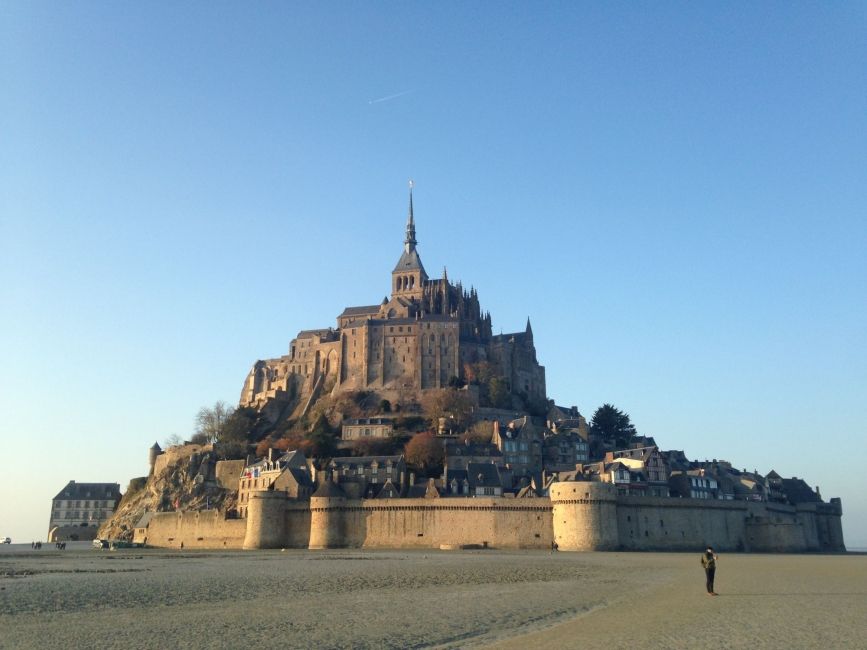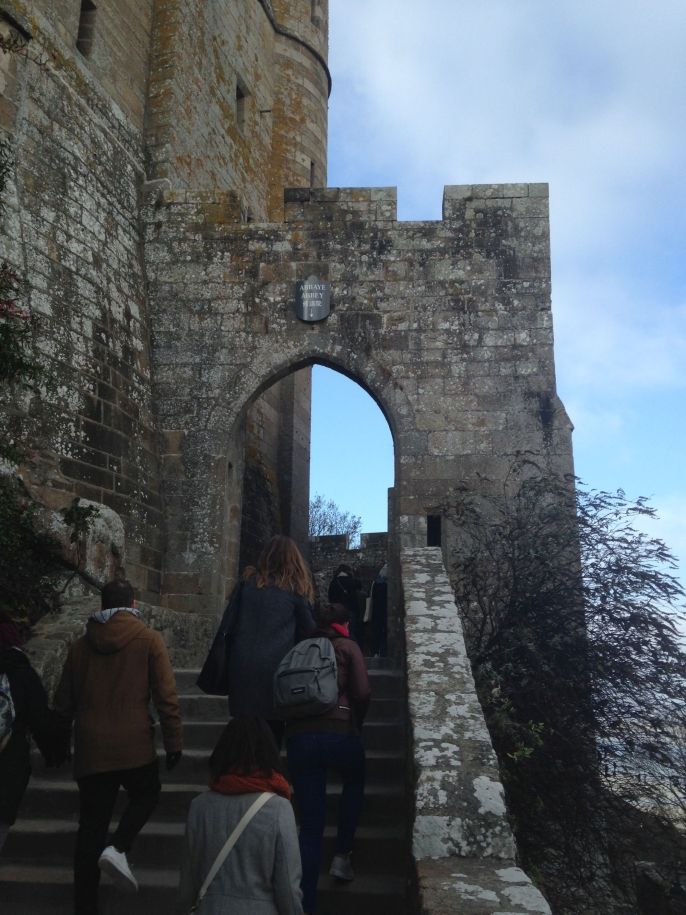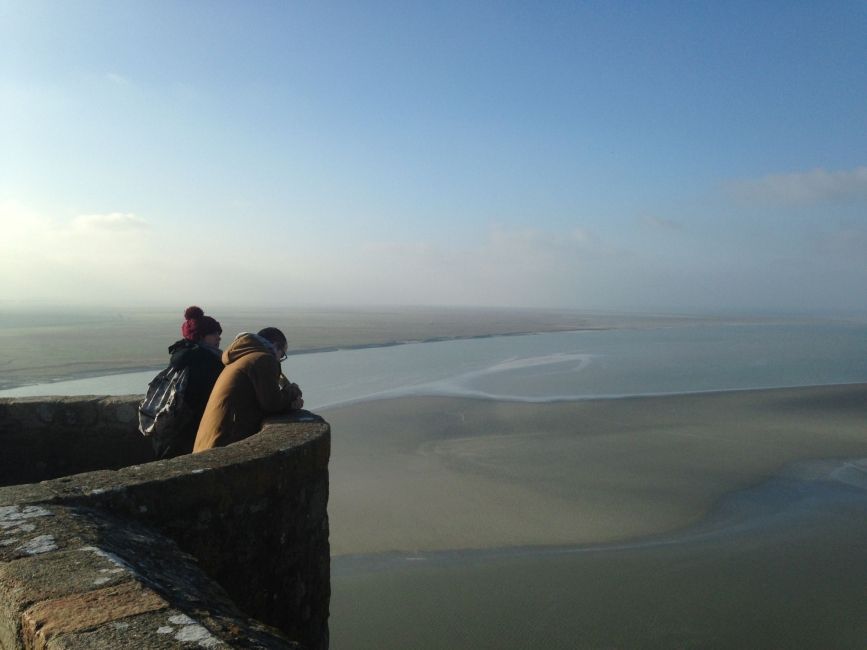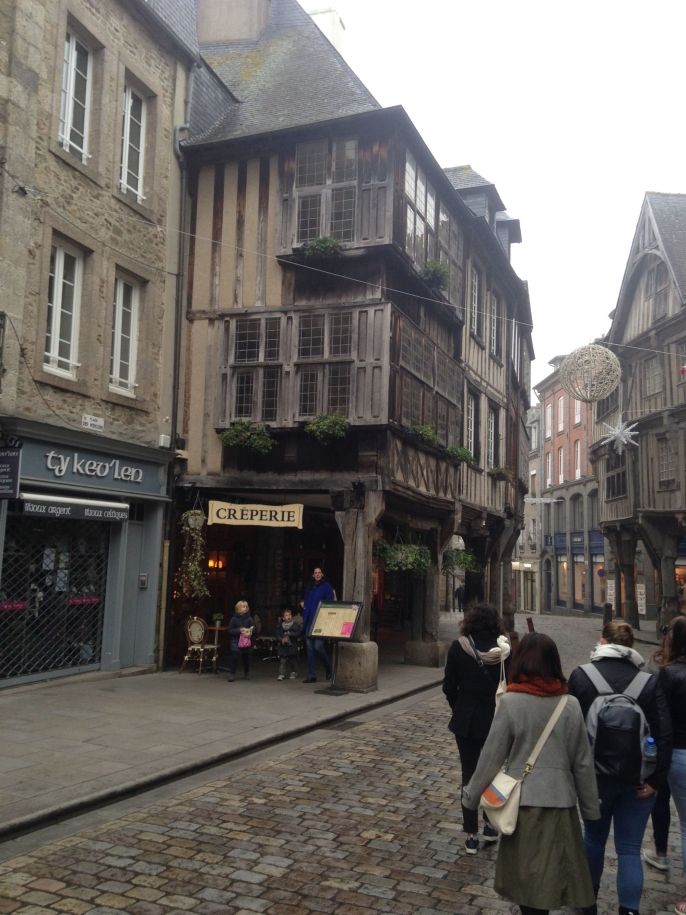Mont St. Michel: Some Time to Travel
I think the question I find the most difficult in all the world is “What’s your favorite movie?” It’s not that I can’t find the response. On the contrary, the answer is so obvious that I almost wonder if it’s a trick question: The Return of the King of course! Anyone who has once beheld the White City of Minis Tirith can never go back. Few other fictions give such a true perspective of reality. (I’m aware of the potential nerdiness of this opening, but I’ve realized that there are some things in life worth nerding out over, Lord of the Rings being one of them, and I made a point to buy the trilogy in French shortly after arriving in Rennes.) That being said, imagine my joy a few weeks ago when, on an excursion with my study abroad cohort, I saw the White City itself rising above the French countryside. What I saw was in fact our destination: Le Mont St. Michel.
But I’m getting ahead of myself. The day began further south, in the port town of Dinan. A medieval fortress, the ramparts are very well preserved and afford a stunning view of the valley, although the foggy weather unfortunately limited the view. The town today sports a beautiful collection of modern shops and medieval wooden houses. This coexistence of the modern and ancient is a theme I’ve noticed throughout the semester, and will return to later on. After a guided tour of the old city center and cathedral, I was particularly pleased to find a crêperie that sold a mint chocolate chip crêpe—my two favorite deserts together at last.
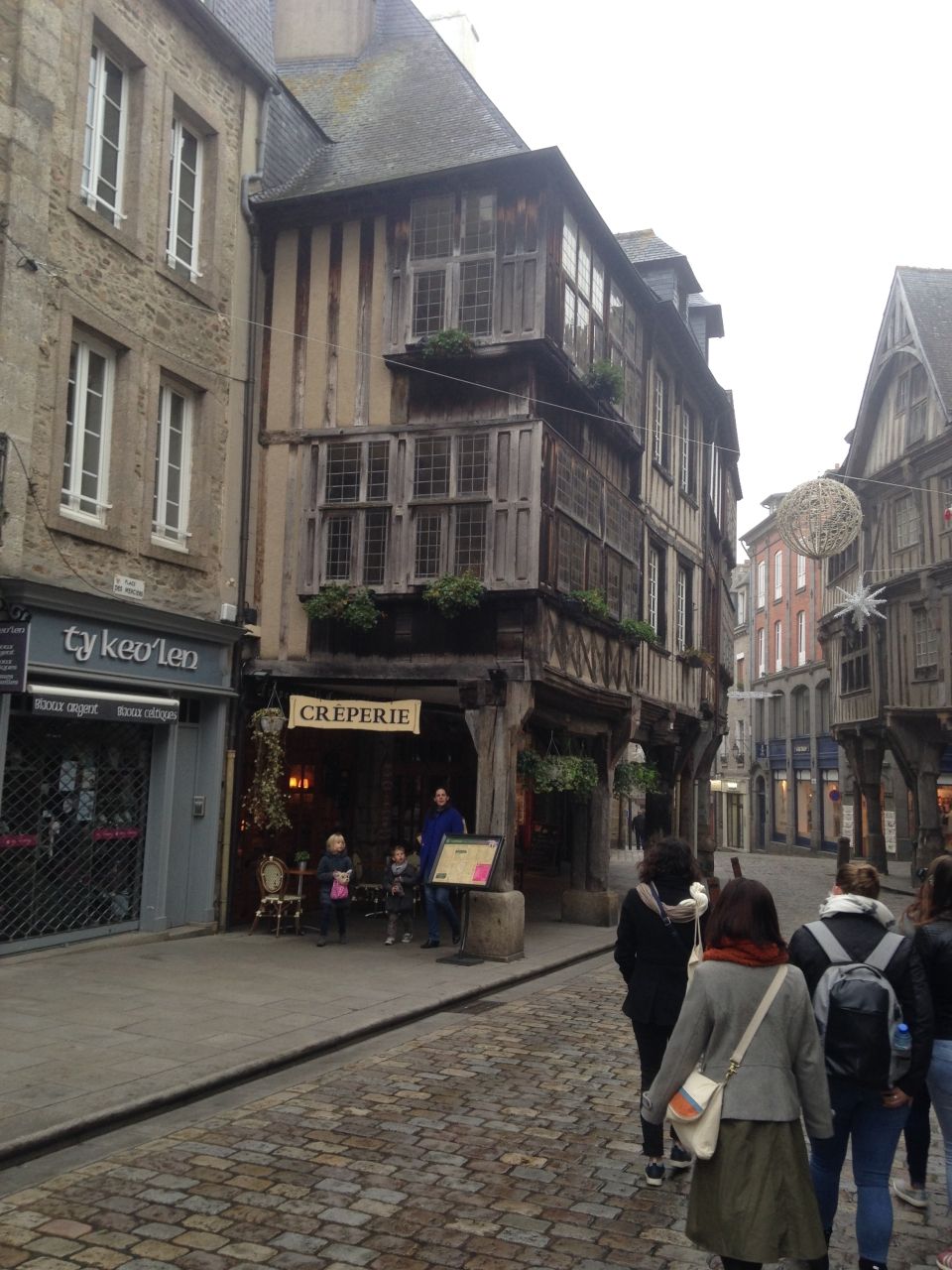
From Dinan we continued on to Mont St. Michel. The view from a distance was breathtaking, but as we approached the site on the shuttle buses over the bridge, the true wonder of the abbey became clear. Rising from the bay on a single rock of granite stood an abbey fortress peaked with a gilded statue of the Archangel Michael, who reflected magnificently the newly-emerged sun. The bus dropped us off at the end of the bridge, and we made our way inside. Once inside the walls, we crossed another interior draw-bridge and then began the accent. The present-day abbey is the result of centuries of building projects and renovations, begun in the 6th and 7th centuries after Jesus Christ. Built on a small granite island, the architects were prevented from building outwards, and thus built their community vertically. As a result, the houses, ramparts, shops, and abbey itself all form an intricate web of upward-spiraling passageways. This made for a really exciting climb—I could have spent all day just exploring the complexities of it. But our goal of reaching the abbey itself pushed us further up and further in. And what a reward it was! You enter the grounds and are immediately transported into the past. Walking in the very pathways of the monks, standing before remnants of frescoes a thousand years old, and gazing up at the buttresses of the mighty cathedral, I completely forgot myself and my modern context.
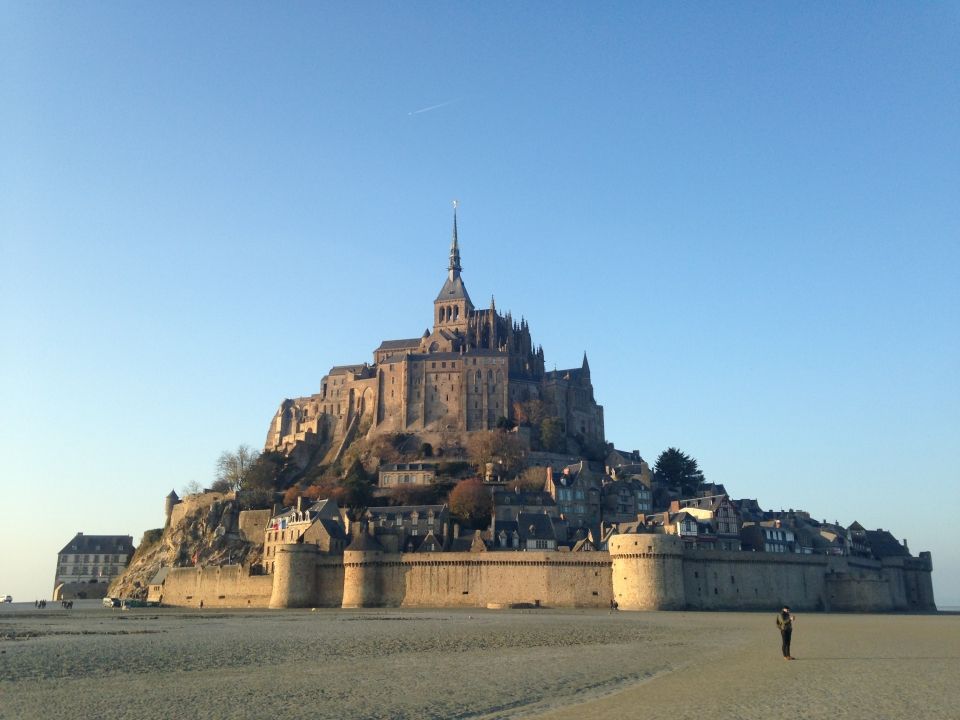
I could go on describing the ins and outs of the abbey, but one experience deserves special attention. On one of the high terraces we paused to catch some glimpses of the massive sand bay surrounding the mount. And there amidst the calls of gulls I heard an unexpected sound—the whir of a drone. It was just this moment that impressed me, for it so forcefully brought the “now” into the “then.” Here was a little piece of the 21st century hovering among the memories of centuries past. This coming together of the past and present is something I’ve been experiencing throughout my semester here in France, from seeing a Mercedes bus driving over cobblestones to hearing live jazz next to a Feudal Age castle. I had noted it briefly in the buildings in Dinan, but it came home to me with striking force there on Mont St. Michel.
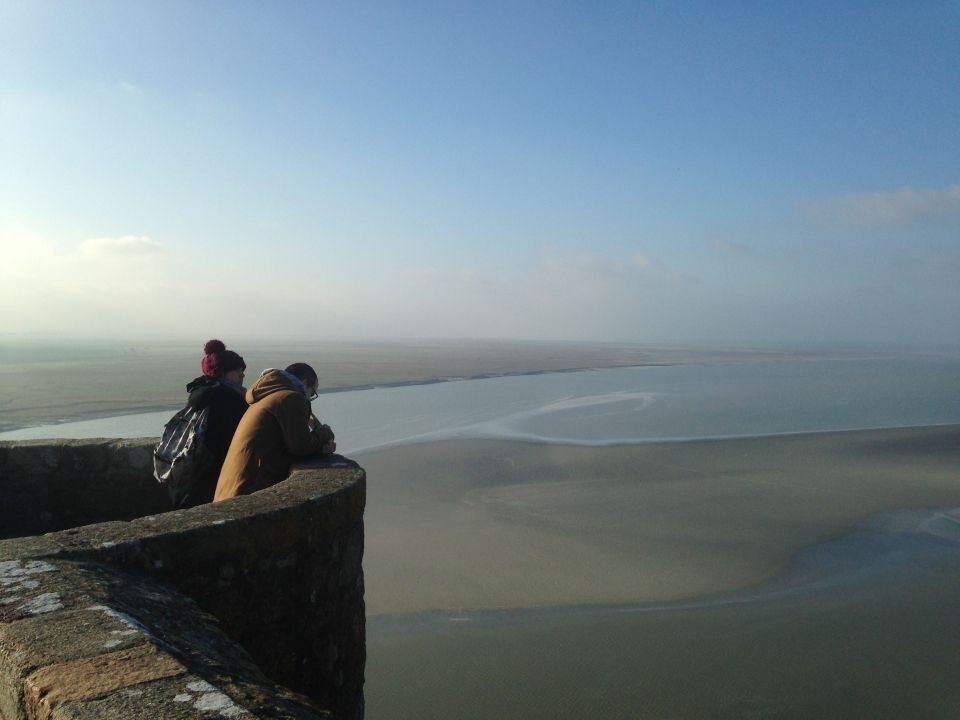
The coexistence of past and present is certainly interesting (at least to history majors like me), but it is also a phenomenon of vital importance. When we can observe history physically in our modern world, or even live in it for a semester, we are able to see that our world is not just “the way it is.” Our context is actually just one of many in a long tapestry of cultures and perspectives. If the past seems different or unusual to us, how much more might our present have seemed “weird” to our predecessors? In this way, seeing the past helps us to actually see our lives today. (Incidentally, historical studies are in this sense very similar to travelling overseas—by seeing a different culture or time, one can get a better understanding of one’s one experience.) Also, when we see history together with the present, we are forced to see that the difference between “today” and “yesterday” is actually just a matter of time. Today will be yesterday tomorrow. For me anyway, this realization leads me to a humbler perspective: perhaps my concerns over tomorrow’s big test or the embarrassing French mistake I just made actually aren’t all that important. Maybe I should give more time to things that will last and less to those that won’t (Netflix comes to mind).
And now I can return at last to where I started all this. The thing I love about The Lord of the Rings is that it invites us into a made-up world but there shows us some deep truths about the reality we inhabit. And so I don’t think it was just coincidence that I connected Mont St. Michel to Minis Tirith: all good travelling—be it across Middle Earth, France, or time itself—helps us to understand ourselves and our place in this world in a new and deeper sense.
Jonathan Liversedge
Wheaton College (IL)
Related Posts
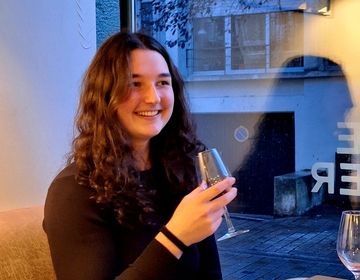
A day in the life
Entre la découverte de la vie française et les cours intensifs pour préparer mon examen d'entrée en droit, mes journées sont bien remplies, mais très enrichissantes ! Embarquez avec moi... keep reading
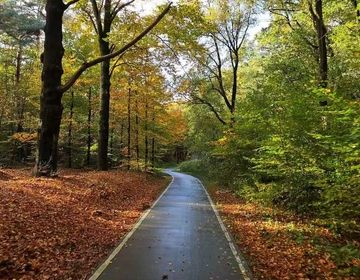
Travel Experiences
One of the best parts about studying abroad is that learning doesn’t stop when you leave the classroom. In fact, some of the most memorable lessons come when I was... keep reading
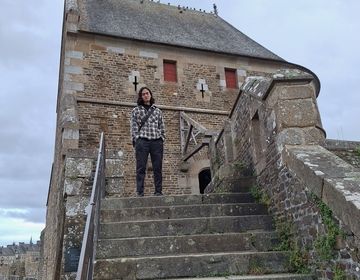
At Home In France
When I came to Rennes for my study abroad, I thought my biggest lessons would come from my university classes—grammar, vocabulary, literature, all that. But honestly, some of the most... keep reading
